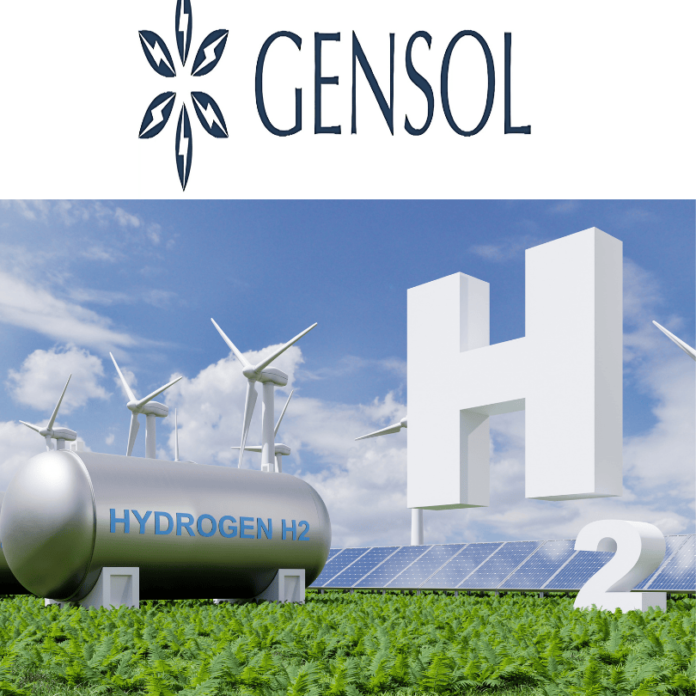As India moves towards manufacturing green hydrogen, the Gensol Engineering and Matrix Gas consortium is set to set up India’s first and largest green hydrogen based steel plant. It is not only a revolution in the manufacturing processes of steel but also a major step toward actualizing India’s ambition to attain a carbon-neutral economy.
Green Hydrogen- An Exploratory Study
Before going deeper into the details regarding this brand-new centre, let’s explain to the reader what green hydrogen actually is. In contrast with the other generations of hydrogen production that utilize fossil fuel, green hydrogen is produced through the electrolysis of water by means of a renewable energy like solar or wind energy. This process yields to zero carbon which means that green hydrogen is the perfect energy source for industries longing to reduce their emission rate.
A Plea for Sustainable Steel Making
Steel is a material that adds to the structure of the world by being a part of any structures and many other structures such as car manufacture. However, conventional steel production is considered to be highly emitting as it releases huge amounts of carbon emissions globally. IEA has reported that about 7% of total global CO2 emission was contributed by the steel industry. Due to adverse effects of climate change, and general environmental pollution, there is need for development of sustainability solutions.
Steel Industry of India where India is one of the largest producers and consumers of steel, the industry has the twin challenges of fulfilling the growing demand at the same time, fulfilling its obligations as per the Paris Agreement. It shall be pertinent to mention here that the partnership between Gensol Engineering and Matrix Gas was amongst the first to attempt to address these challenges directly.
The Concept Behind the Facility
The vision for this green hydrogen-powered steel facility is clear: to develop the method to rebuild the current steel production process with less than 30% carbon emission. As the manager for the project, this green hydrogen integration seeks to cut out the traditional carbon-emitting techniques in steel-making at the facility.
Read Also – The Rise of Small Shareholders in IRFC – 55 lakhs small share holders
This progressive approach challenges not only carbon limits, but also gens an avenue for the incorporation of renewable energy by steel. Accordingly, the application of green hydrogen will promote the facility’s energy intensity and fossil fuel dependency minimization. This association with renewable energy sources is not only beneficial for the environment; it also makes India as a responsible nation providing leadership to the industrialized countries of the world in terms of sustainable industrialization.
Technological Advancements
The implementation success of this facility therefore rests on technologies that enhance production and use of green hydrogen. Currently, Gensol Engineering and Matrix Gas are the reak actors that are working on the advanced electrolysis technology, which in terms, is essential in the generation of hydrogen at a commercial level. Further, the combination of renewable power sources keeps the cost of producing hydrogen affordable and eco-friendly.
The facility will also use new approaches to the generation of steel that enshrines the ability of hydrogen usage instead of carbon in the reduction process. This change could redefine the industry because it offers the option of green and sustainable production consistent with global sustainability objectives.
Economic and Environmental Contributors
The case of the first green hydrogen-based steel plant in India is predicted to have vast economic effects. The construction of new renewable energy and steel industries out of the waste materials will also guarantee employment of people while at the same time developing infrastructure that will boost the local economies.
From an environmental point of view, therefore, what is important is the reduction in carbon emissions. The facility is set out to reduce the plants manufacturing emissions by an extent applicable to India’s plan of attaining net-zero emissions by 2070. It also opens other industries to research this practice by emulating it so that it can bring a change in the economy from such industries.
CHALLENGES AND FUTURE PROSPECTS
As much as the vision rolling out this facility is noble, the exercise of getting there is never easy. A significant expenditure may be required to purchase technology and to develop the physical infrastructure in the early years and there may well be technical challenges regarding the ability to scale up hydrogen production. Nevertheless, an example of how Gensol Engineering and Matrix Gas are striving to address these issues was demonstrated with their cooperation.
As the process advances one day, this move may provide other nations pursuing carbon neutrality of their industrial segments an example. As knowledge regarding climate change increases, customers will demand easier and more environmentally friendly methods thus making the use of green hydrogen in facilities for steel processing of pivotal importance in the future.
Conclusion
Formation of Gensol Engineering and Matrix Gas partnership for the development of India’s first and largest green hydrogen-based steel plant is a historic step towards utilizing sustainable solutions. This technique promises to make steelmaking less pollutive while bringing India into the frontline of the global shift toward a cleaner industrial economy. As the world shifts from the traditional processes to more environmentally friendly approach, this innovation may be an example to other projects in different fields of the economy.









[…] Read Also – Gensol Engineering and Matrix Gas is set to set up first and largest green hydrogen based steel plan… […]